-
Content count
6,020 -
Joined
-
Last visited
-
Days Won
2
Posts posted by apothecary
-
-
Hi Heffa,
You can pick them any point from now.
Just make sure 100% that they are are indeed var utilis before attempting a harvest or you will have a really rough time of things.
-
Was a great day.
When I turned up it was just sharxx and Amazonian but before long more and more heads started to drift in and soon the turnout was very good! Love the dedication of Melbourne plant heads. Good weather in the end and good food thanks to the generosity of many.
Spent most of my time immersed in conversation, only had the brief chance of a stroll and managed to take the opportunity to do the usual rounds, culminating in a nose full of lovely Zieria citriodora twigs.
Am generally amazed by the intelligence, resourcefulness and humanity of people turning up at the Melb meets, if I had to start a post apocalyptic subsistence community with anyone it would be you guys!
-
Awesome weekend. Oh I'm sorry, let me clarify, I had plans for an awesome weekend but the rain ruined them so I am blotting out the memory from anything on the weekend except for the meet which was awesome.
...
Awesome weekend.
-
-
Great day! Perfect weather and good peeps.
Moar meetz plz.
-
It took sina years of pestering me but I've enjoyed kava regularly going on three years now.
As for the taste I cant say since I havent tried your kava, the taste seems to vary drastically based on source. I got a pound of hawaiian once and that stuff was horrid, whereas my favorite brand of samoan kava (paradisegypsy) doesnt taste at all bitter, or metallic, or otherwise funky when I extract 4 tbsp into 2 cups half water/half milk. I just received a fresh pound and am just barely managing to wait to dive into it until 3 days from now

You know how we do.
+1 on loving the Klin, haven't had any in ages though. Did all those reporting anxiety attacks drink a higher dosage than recommended by the instructions? It's a freeze dried product not the dried root so you can't treat it the same as drinking a freshly brewed bowl. Never experienced that effect personally but seen it in people who didn't pay heed to personal and package limits.
Been lucky to strike gold on some really great waka recently thanks to a close friend, great stuff!
Would be lost without kava in the medicine bag for anxiety, muscle pains, insomnia, etc. 2tsp of klin or just 1 cup of fresh kavakava.
I do not recommend to mix with alcohol although many people do and don't seem to mind (not a drinker myself).
-
In NSW, but would like to know each of the state laws anyway. I looked at that site yesterday, but searching out the term "ephedra" yielded SFA. Law site always manage to obscure information from me, maybe I'm looking for the wrong things on them.
I'll keep in mind things such as the poisons acts, etc, thanks for bringing them to my attention.
Hi tripsis I guess we are getting a little off topic now but that's ok I guess.
Searching "Ephedra" on legislation.nsw.gov.au definitely returns at least 1 hit from the "Drug and Alcohol Treatment Act 2007", where "Ephedra alkaloids" are listed as a schedule 1 substance "Stimulants & Hallucinogens":
STIMULANTS & HALLUCINOGENS—Ephedra alkaloidsEphedrine (including Shabu)
Norephedrine
Pseudoephedrine (including Benadryl, Panadol Sinus, Sinutab, Sudafed, Nurofen Cold & Flu)
Ephedra Alkaloids, NEC
So it should at least return one hit to your search!
Ephedrine itself is listed in 3 NSW acts and 2 regulations.
-
Dunno where you are tripsis, how would I be able to tell you which state law to access?
Most states have their stuff setup like: http://legislation.STATE.gov.au for example VIC is http://www.legislation.vic.gov.au/ but you need to examine yours individually.
Also good to keep in mind some states/territories have really stupid shit, like live plant definitions in QLD and poison schedules in ACT.
-
State laws are the kicker and it would be wise to be versed on these before attempts are procurement. Law enforcement seems to have a hard on for this genus.
Otherwise tripsis has it covered.
In regards to searching, try just "Ma Huang" with the inverted commas included, or Ephedra.
In my opinion a very very interesting plant I was glad to catch the talk Des Tramacchi gave at EGA last weekend which featured photos of young Iranian kids collecting Ephedra for the Zoroastrian yasna.
http://www.heritageinstitute.com/zoroastrianism/haoma/index.htm
-
Oxalis! Hard to pull out, leaves snap off leaviog the tuborous root and when you finaly get that out theres heaps of tiny bulbs attached to it that drop off everywhere grrrr, i do have parsley as a weed here though which is welcome
Oxalis tuberosa roots release a fluorescent exudate.
There was a paper stating these exudates to be b-carbolines (even harmine directly?), which caused some excitement within the community. However the paper was retracted and I believe the scientific community is unsure what the exudates are composed of.
However it is well known Oxalis leaves can act as an antidote to various poisons (arsenic, mercury, Datura?).
More work is definitely needed on this plant IMHO.
At EGA on the weekend someone repeatedly told me Sida acuta was native Australian. After I returned home, managed to confirm that it isn't. Sida are extremely useful weeds during the winter periods.
Like the wise amongst us here have pointed out, most weeds end up being very useful. My most hated weed is couchgrass. However wiki shows even this extremely invasive annoying plant has good use:
Couch Grass has been used in herbal medicine since the Classical Greek period. Sick dogs are known to dig up and eat the root, and mediaeval herbalists used it to treat inflamed bladders, painful urination and water retention. It also has antiseptic properties.The dried rhizomes of couch grass were broken up and used as incense in mediaeval Northern Europe where other resin-based types of incense were unavailable.
-
Hey dude, you might also be interested in looking for some Aptenia Cordifolia, from what I've heard it's meant to be a decent substitute to Kanna.
 Can't seem to find any proven research on it though.. everything seems to point straight to Sceletium for the full effects.
Can't seem to find any proven research on it though.. everything seems to point straight to Sceletium for the full effects.We have done experiments on Aptenia and reported the results back here to the community.
My experience is generally, stick to the Sceletium species. Addition of the roots into the fermentation bag seems to increase the potency.
Spoke to someone yesterday who has been using Sceletium without fermentation, but generally I like to follow the traditional prep where possible.
-
Some mentions here of Sapo/Kambo.
My understanding that Sapo is only used when the hunting is hard, Matses tribes usually use a much less (but still extremely) potent snuff called Nu Nu. This is produced from Nicotiana rustica leaves and Theobroma bicolor inner barks.
Some Amazonian tribes are using Piri Piri (Cyperus) root for hunting also.
We should also not forget the ultimate hunting plant, Hoodia gordonii.
-
I just keep watching the G-force video over and over again
-
http://www.abc.net.au/iview/#/view/609781
Enjoy!

The theme of the episode is how plants have better selection potential through making themselves desirable to humans, and also includes other similar plants like potatoes.
Also examines the idea of the Drug War as selection pressure.
-
supply and demand... wouldn't this just raise opium prices?
According to the UN there are supposed to be stockpiles which can supply roughly ten years worth of demand at current global levels.
Suspicions might be well founded. Anyone remember this?
In addition, the U.S. has also been involved in the development of the fungus Fusarium oxysporum to wipe out coca.[1][2] In 2000, the Congress of the United States approved use of Fusarium as a biological control agent to kill coca crops in Colombia (and another fungus to kill opium poppies in Afghanistan), but these plans were canceled by then-President Clinton, who was concerned that the unilateral use of a biological agent would be perceived by the rest of the world as biological warfare. The Andean nations have since banned its use throughout the region. (The use of biological agents to kill crops may be illegal under the Biological Weapons Convention of 1975.)From:http://en.wikipedia.org/wiki/Coca_eradication
Sounds all too familiar
In 1998, Supporters in the US Congress tried to attach the use of the fungus to a 1.8 billion dollar aid package, but in 2000, the plan was rejected by the Colombia government and the United Nations. "The [Colombian] government consulted national experts on the subject and decided not to agree to test the fungus because it felt that any agent foreign to the country's native ecosystem could pose a serious risk to the environment and to human health." Colombia's neighbors, Peru and Ecuador, have also expressed concern about the proposed use of the fungus causing them ecological and agricultural damage. (http://www.greens.org/s-r/26/26-14.html)#"Solomon et al. (2005) conducted a study on the effects on human health and the environment of aerial spraying of glyphosate herbicide for the illicit crops eradication programme in Colombia, based on a review of literature. It was found the formulation of glyphosate used could produce temporary irritation in eyes and skin, but no effects on reproduction were observed. No ecological field data were collected from the region, but a review found that glyphosate had low toxicity to non-target organisms other than plants. The formulation used in the eradication programme in Colombia is of low toxicity for mammals and vertebrates, although some temporary impacts may occur. Amphibians are the group most sensitive to this formulation, and it has been suggested that other formulations be tested when eradication is conducted near to water bodies, in order to minimise impacts on amphibian populations (Solomon et al., 2005). Relyea (2005) tested the impacts of glyphosate on amphibians and concluded that it could cause high rates of mortality in larval stages and lead to population decline.
"There appear to have been no systematic field studies on the possibility of loss of forest from unintended drift of glyphosate during aerial spraying."
Source:
United Nations Office on Drugs and Crime, "Coca Cultivation in the Andean Region: A Survey of Bolivia, Colombia and Peru" (Vienna, Austria: June 2006), p. 44.
http://www.unodc.org/pdf/andean/Andean_full_report.pdf
#
The US Department of Agriculture reports "A pathogenic strain of Fusarium oxysporum, causes Fusarium wilt, a disease that afflicts many crops such as watermelon, muskmelon, and basil but is a bigger problem for tomato growers."
Source:
"USDA, Canada Collaborate on Fusarium Wilt", Methyl Bromide Alternatives Newsletter (Beltsville, MD: USDA Agricultural Research Service, April 2000).
http://www.ars.usda.gov/is/np/mba/apr00/wilt.htm
#
"Guio (2003), in his study in Samaniego, Nariño (Colombia), reports that aerial fumigation of poppy crops also affect household crops and alternative crops promoted by UNODC. Intensification of fumigation has lead to an increase in complaints to the Defensoria del Pueblo regarding impacts on farmers' health, domestic animals, fishes and legal crops. Ortiz et al. (2004), in an essay about agriculture, illicit crops and the environment for the National Environmental Forum (Colombia), mentions that recent studies in Putumayo have concluded that more than 2,700 hectares of licit crops, including fruits, and more than 200,000 fish, were lost because of fumigations. These figures are for people that submitted their cases to local authorities."
Source:
United Nations Office on Drugs and Crime, "Coca Cultivation in the Andean Region: A Survey of Bolivia, Colombia and Peru" (Vienna, Austria: June 2006), p. 44.
http://www.unodc.org/pdf/andean/Andean_full_report.pdf
#
"Velaidez (2001) visited the Municipality of Cartagena de Chaira in the Department of Caquet between November 1998 and February 1999 to investigate the impact of aerial fumigation on farmers and their crops. This study reported unintended effects of aerial glyphosate spraying but no quantitative data, with affects on rubber and cocoa plantations and food crops such as plantain, maize, yucca, rice, vegetables and fruits. Cattle were reported to lose hair after eating pastures previously affected by the fumigation. The death of young chickens and farmed fish was reported as a result of related water contamination."
Source:
United Nations Office on Drugs and Crime, "Coca Cultivation in the Andean Region: A Survey of Bolivia, Colombia and Peru" (Vienna, Austria: June 2006), p. 44.
http://www.unodc.org/pdf/andean/Andean_full_report.pdf
#
"Aerial spraying of a marijuana field near a Rarámuri village carried out by the Federal Attorney General's Office Procuraduría General de la República, PGR) left 300 sick and injured and may have killed a two-year old girl according to the Chihuahua State Human Rights Office (Comisión Estatal de Derechos Humanos, CEDH)."
Source:
Macias Medina, Silvia, "PGR Allegedly Sprays Marijuana Field, Killing Child and Injuring 300", reprinted in Frontera NorteSur, originally published in El Diaro, August 5, 2000. Available on the web at http://www.nmsu.edu/~frontera/jul_aug00/today.html, accessed May 21, 2007.
#
When aerially sprayed, the herbicide Glyphosate can drift for up to about half of a mile. In Colombia, where the herbicide Glyphosate is sprayed from airplanes, children have lost hair and suffered diarrhea as a result of its application.
Source:
Cox, C., "Glyphosate, Part 2: Human Exposure and Ecological Effects," Journal of Pesticide Reform, Vol. 15 (Eugene, OR: Northwest Coalition for Alternatives to Pesticides, 1995); Lloyd, R., "Publisher Warns about Impacts of Drug War," World Rainforest Report 37, (Lismore, NSW: Australia, 1997); Drug Enforcement Agency, Draft Supplement to the Environmental Impact Statements for Cannabis Eradication in the Contiguous United States and Hawaii (Washington DC: U.S. Government Printing Office, April 1998).
-
-
Awesome photo Tripis! I love the one with the two flowers over the pedro.
I vote for that pic, keep up the good work~!
-
Shit bro, somebody needs a hug and a blanket.
-
What the hell reptyle? Get off it bro.
Thanks for your post artdplmr and welcome to the forums. It is good to see some writing on a smoking mix we don't have a lot of info on.
I'm Iranian and have never heard of this stuff myself, so very interesting for me. From some initial research the effect seems largely to be from nicotine in cured tobacco, so that's why you don't miss cigarettes - you are probably getting more nicotine now than then. Coolness probably modulated using the usual mint, clove, honey, vanilla suspects. Hotness may simply be modulated by the degree of tobacco curing (i.e. tar and nicotine content).
Thought it was kind of funny you said "not gonna tell you the site find it yourself" and then you told us?
-
Maybe this is the way the world is going to go...
I thought it was HAARP?

-
Aren't ya supposed to insert the sarcasm, first, PD?
-
-
Just read that article Dale Cooper, good one. Daddy long legs and Black House Spiders are definitely the way to go. Biological controls rock!
Yea right WoodDragon, I forgot about long haired dogs, sorry
 As an avid flea hunter, I would like to see your collection of combs ;)
As an avid flea hunter, I would like to see your collection of combs ;)-
 1
1
-
-
VPN also encrypts your mail etc
No not really, at best only encrypted only between your host and the VPN gateway. From the gateway (from which is a minimum of 3 hops to the recipients inbox, often many many more) it is all plaintext.
You should use PGP (GnuPG being the free open source implementation) to encrypt all standalone transmissions (documents, emails, addressbooks, etc) regardless of the protocol (VPN, ssh tun, ssl http proxy, whatever) used to transmit!
It is really important for people to learn the technicals of these protocols to ensure they don't give a false sense of security. You need to understand precisely what security they can and cannot provide.
If you want real anonymity you can't go past Brazilian or Estonian providers (imho). But realistically I would be looking for providers in Hong Kong or Taiwan. New Zealand was a prime candidate for my thoughts, but someone raised the point recently they will probably be in the filtering boat before long.



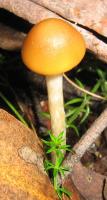
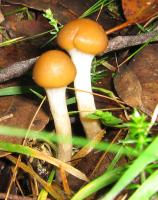
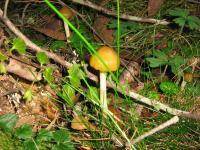
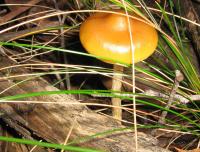
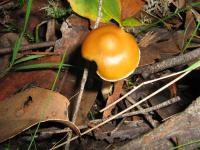
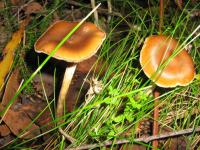
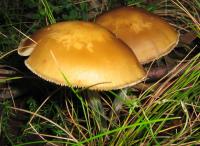
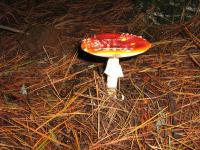
Opinions Needed on What to Grow
in Ethnobotany
Posted
Now is a great time of year to grow Winter ethnobotanicals, save your tropical seed and patience for when they will thrive best.
I think attempting an Iboga germination now without a very controlled environment will probably result in heartbreak.
Trichocereus cacti should be fine as long as you are germinating them with bottom heat.
Good beginner ethnos for growing in the colder months (imho):
* Sceletium species
* Artemisia absinthum
* Desmanthus illinoensis (this would make a good winter substitute for Mimosa)